In the latest in our series of SFP+ to 10Gbase-T module reviews, we have another “Cisco SFP-10G-T-S” alternative, the QSFPTEK QT-SFP-10G-T. Our QSFPTEK QT-SFP-10G-T review delves into how this SFP+ to 10Gbase-T module stacks up to its less expensive and more feature-rich competition. As a quick note, there is no Cisco SFP-10G-T-S on the company’s current compatibility matrix, but that seems to be what many of the 3rd party vendors are using for these units.
QSFPTEK QT-SFP-10G-T Overview
This module comes in a branded white box which is a step up from some others such as the FlyFiber SFP-10G-T-C that had unbranded packaging. One can also see FCC, CE, and RoHS markings on the package which the FiBay unit did not have.
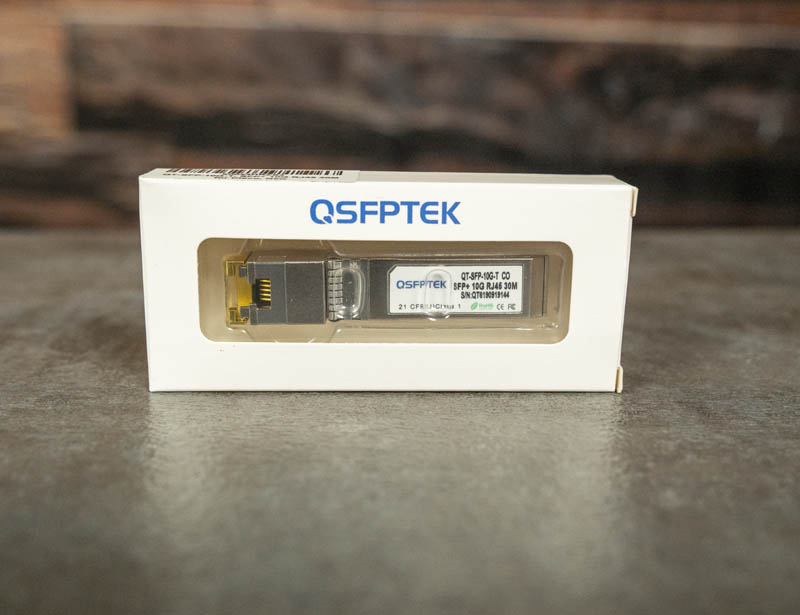
Looking at the back of the box, you can see information including the factory in Wuhan China, where the module was manufactured. This is probably one of the few places in the world with “Optical Valley New Power” in its mailing address.
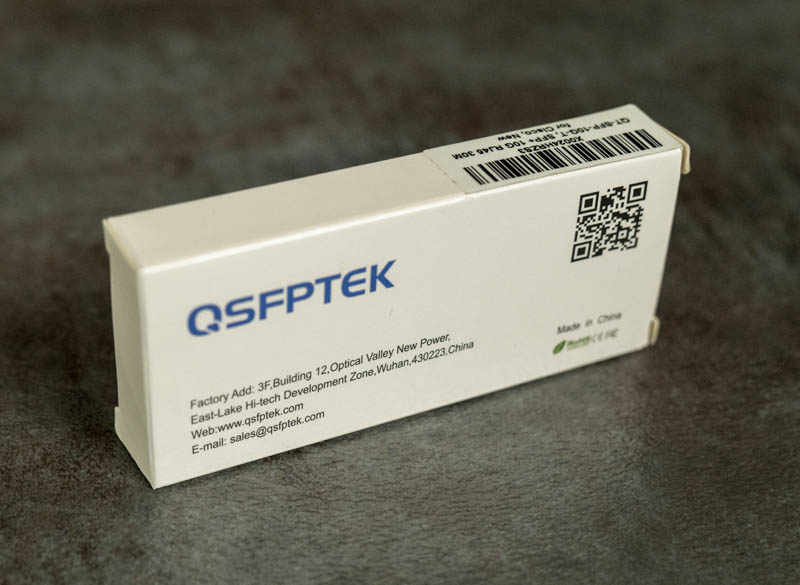
If you have been following this series, and feel like you have seen this package before, it is because you have. In our 6COM 6C-SFP-10G-T 10Gbase-T Adapter Reviewwe saw similar packaging including the same logo, QR code, “Made in China”, RoHS, CE, FCC markings, as well as the same “Factory Add”, “Web”, and “E-mail” template.
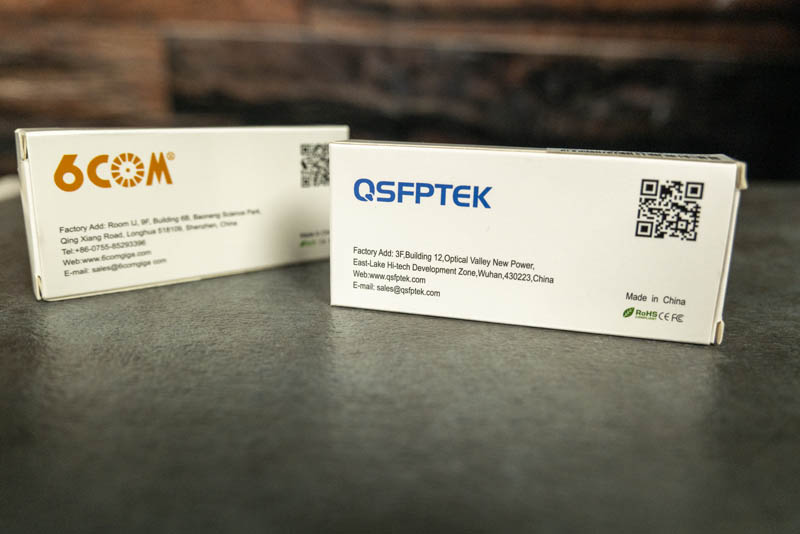
The module itself has a nice label that shows it is a SFP+ to “10G RJ45” or 10Gbase-T module. It also says that it is a 30-meter range module. This is great if you are looking at several modules in a common tray later in the lifecycle. Having these markings makes the module easy to identify.
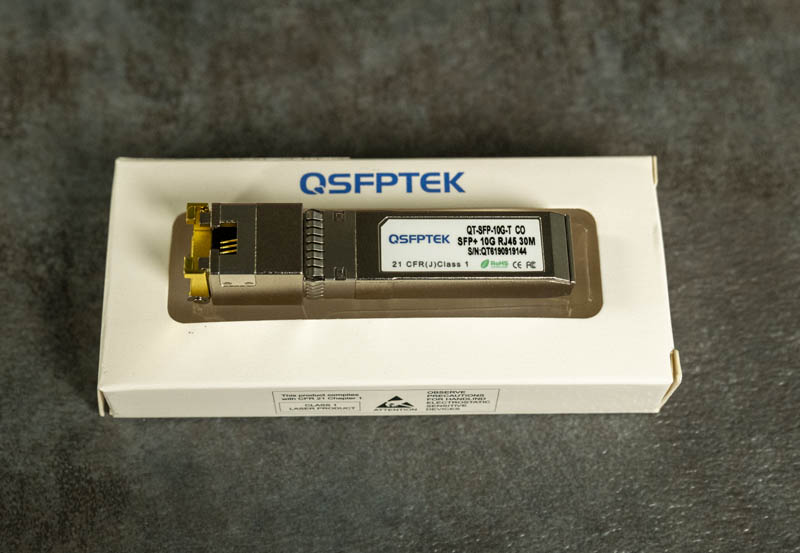
These modules are designed with the end that faces out of the SFP+ cage having a RJ45 port for 1GbE and 10GbE networking. If you have a SFP+ switch but need one or a few ports of 10Gbase-T of up to 30 meters, this is the target application for these modules.
Looking at the PCB and casing, we can see this is similar to other modules that we have seen in our review series thus far. SFP+ modules are relatively standardized so it makes sense that we are seeing the same casing repeatedly.
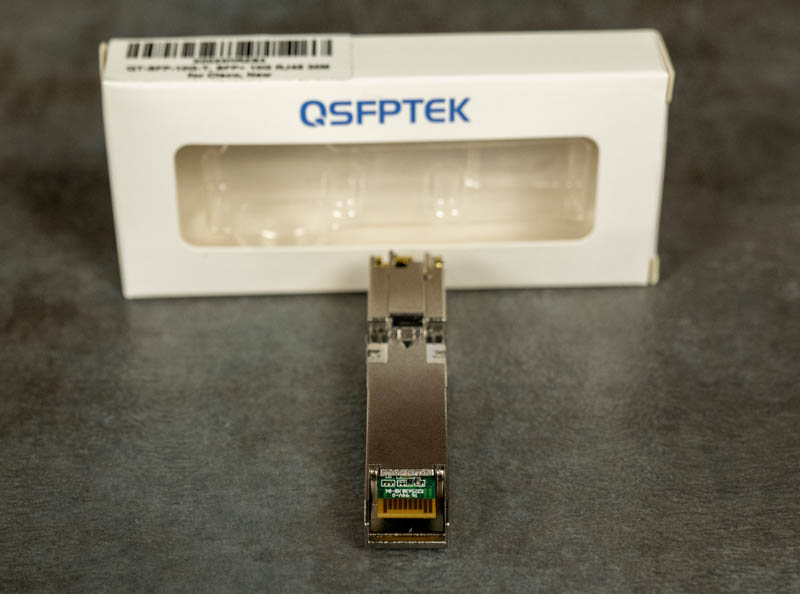
The rear of the unit is the part that plugs into the SFP+ cage. We are taking photos of these as it can often be one of the most telling identifiers regarding module similarity. This is almost like taking a fingerprint of the module.
Overall, these are simple modules. As part of our series, we are testing for the same advertised Nbase-T support for 2.5GbE and 5GbE that we saw on the MikroTik S+RJ10 unit. Many other modules that claim to be Cisco SFP-10G-T-S alternatives include this as an undocumented feature so we wanted to test the functionality.
QSFPTEK QT-SFP-10G-T Nbase-T Support
According to the official spec, this is a SFP+ to 10Gbase-T converter. There is no mention of Nbase-T, 2.5Gbase-T, 5Gbase-T, 2.5GbE, or 5GbE in the specs, nor on the device or its contents. We, naturally, had to test this out since the MikroTik S+RJ10 and many other Cisco SFP-10G-T-S compatible modules include Nbase-T support.
First, we tried the QSFPTEK QT-SFP-10G-T in a MikroTik CRS326-24S+2Q+RM Switch connected to an Aquantia AQtion 10Gbase-T adapter on a 20m CAT6 cable we had:
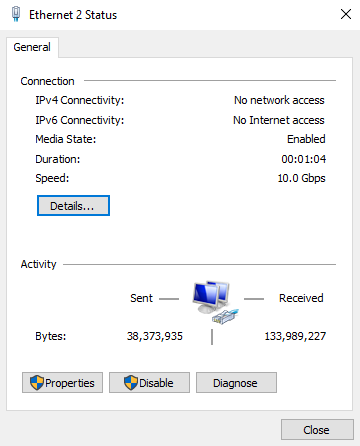
As you can see, we linked at 10Gbase-T speeds without issue. Autonegotiation worked out of the box.
We then selected a 2.5Gbps rate on two different Realtek RTL8125 cards along with an Aquantia AQtion NIC. We also tried 5Gbps on the AQtion. None of those configurations yielded a stable link.
Our key takeaway is that this unit does not support Nbase-T 2.5GbE and 5GbE speeds like many of the other offerings we are testing. Given the similar pricing, this is actually a huge finding.
QSFPTEK QT-SFP-10G-T Performance
We ran a few NAS tests to a SFP+ SSD NAS from a workstation with a 2.5/5/10Gbase-T adapter as well as a SFP+ adapter to see the impact of the QSFPTEK QT-SFP-10G-T running in a MikroTik CRS309-1G-8S+IN switch.
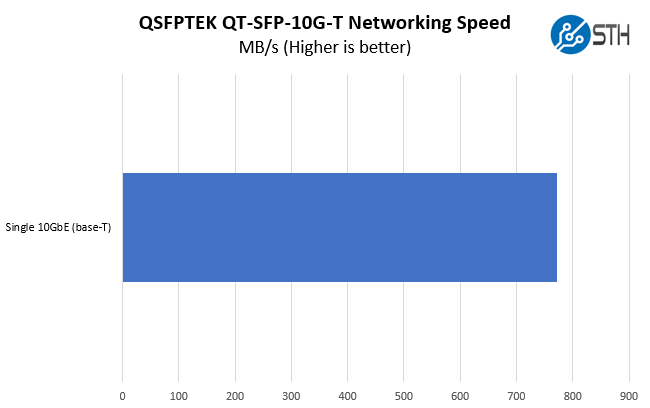
This result falls into line with the 6COM and ADOP units we have tested. They are not the highest of the entire SFP+ to 10Gbase-T set, but they are relatively close to where we would want. Of course, there are no 2.5GbE nor 5GbE results here as we could not properly pass traffic at those speeds.
We also tested the SFP+ module with Jumbo Frames in Windows using -d -l 8972 in our command line.

As you can see, this is working as well. This was an ask in some of our previous reviews, so we are adding going forward in the series.
Final Words
While the QSFPTEK QT-SFP-10G-T did everything it said it would it is hindered by a few important facets. First, is the price. This module is 50-80% more than many of the lower-cost modules and is priced similarly to the MikroTik S+RJ10 as of when we purchased this module in late December 2019. Second, the QT-SFP-10G-T does not support Nbase-T. While the specs do not mention 2.5GbE or 5GbE support, we now have six of the nine modules we have tested including multi-gig support. For those who may want to use an adapter to go from SFP+ to a multi-gig NAS, server, or workstation, this is a noticeably lacking feature that will leave one at 1GbE speeds to get an operable sub-10GbE link.
If this module was in the $27-30 range, we think it would be a good value. Since it is selling for significantly more, at the time of this writing about double, we think that there are other modules such as the HiFiber SFP+10GBASE-T ASF-10G-T, Ipolex ASF-10G-T, and FlyFiber SFP-10G-T-C that represent better values in the market today.

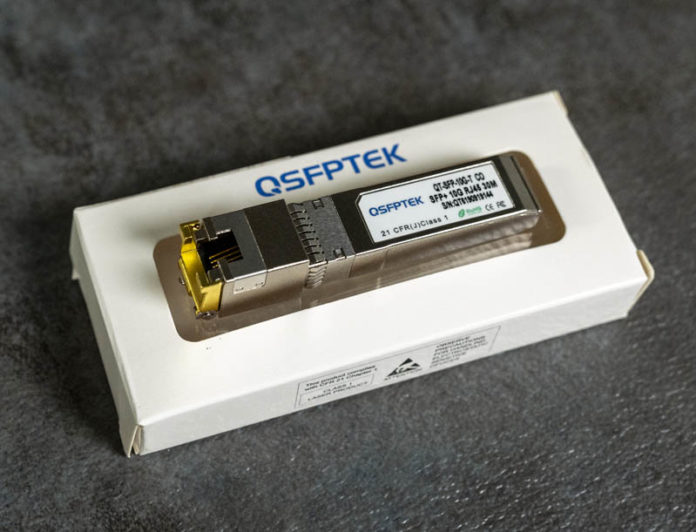


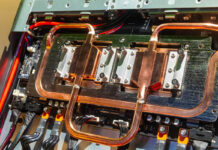
Another good review. Do hope there will be a one chart that will link all the results of the different units for an easier comparison.
Considering that this module was made in Wuhan of all places, has anyone at STH got infected yet?
Ha logoffon! No. This review was written weeks ago before Wuhan was so well known.
I too hope for a final comparison article, hopefully also including the Ubiquity one which in the UK is priced the same as these Chinese modules ($70-80 USD)
Also, I know it’d be a fair bit of extra work, but it’d be great if you could take a 100m patch, then do some tests before chopping 5 or 10m off and re-testing. As someone with a good number of 30-50m lengths (impractical to use fibre) which are fine running 10G directly between Aquantia-based NICs but fail when using these modules, I’d really love to know if there’s any which do better or worse in challenging conditions.
Hi
We have a Dell server that has a QLogic 2562 (8GB) fiber (SFP or SFP+) host bus adaptor.
We want to connect it to a hard drive array which has eight SAS Mini HD (12GB) ports.
Could you please recommend a transceiver for this connection?
Thank you.
Ditto on “Another good review. Do hope there will be a one chart that will link all the results of the different units for an easier comparison.” Keep up the great work & excellent articles :).
This module supports multi-gig for me and is advertised as such on Amazon. I think it got a firmware upgrade along the way.
Thanks for the report Wes. They even change chips in these over time.